Showing Spotlights 33 - 40 of 338 in category All (newest first):
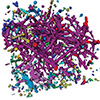 Researchers incorporate graphene microtubes into hydrogel actuators, achieving up to 400% faster response and 4000% higher stress without sacrificing strength. The nanoengineered hydrogels enable untethered light and electrical control, overcoming key limitations to expand possibilities in soft robotics and biomedical devices.
Researchers incorporate graphene microtubes into hydrogel actuators, achieving up to 400% faster response and 4000% higher stress without sacrificing strength. The nanoengineered hydrogels enable untethered light and electrical control, overcoming key limitations to expand possibilities in soft robotics and biomedical devices.
Oct 13th, 2023
 New ultra-thin graphene metalenses can focus light into exotic shapes like spirals and doughnuts. This enables advances in areas like optical trapping, microscopy, quantum optics and communications.
New ultra-thin graphene metalenses can focus light into exotic shapes like spirals and doughnuts. This enables advances in areas like optical trapping, microscopy, quantum optics and communications.
Oct 12th, 2023
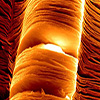 Research shows vertically stacking distinct 2D materials like MXenes enables precise engineering of electronic and optical properties at interfaces, advancing optoelectronics.
Research shows vertically stacking distinct 2D materials like MXenes enables precise engineering of electronic and optical properties at interfaces, advancing optoelectronics.
Oct 2nd, 2023
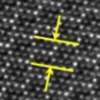 Researchers demonstrated controllable atomic-scale patterning and resistive switching in 2D cuprous telluride crystals. Their memristor model and applications in image processing signify progress towards advanced in-memory computing.
Researchers demonstrated controllable atomic-scale patterning and resistive switching in 2D cuprous telluride crystals. Their memristor model and applications in image processing signify progress towards advanced in-memory computing.
Sep 12th, 2023
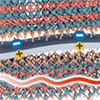 Scientists devise a novel strategy to completely maximize inexpensive MXene materials for scalable and reliable electronic fabrics with integrated capabilities.
Scientists devise a novel strategy to completely maximize inexpensive MXene materials for scalable and reliable electronic fabrics with integrated capabilities.
Sep 5th, 2023
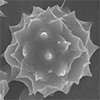 Researchers use MXene to develop a flexible electronic skin that replicates the microstructures in human skin to achieve exceptional sensitivity. The multifunctional sensor also provides therapeutic heat treatment.
Researchers use MXene to develop a flexible electronic skin that replicates the microstructures in human skin to achieve exceptional sensitivity. The multifunctional sensor also provides therapeutic heat treatment.
Aug 31st, 2023
 Research uses unique catalysts and clean energy to lower atmospheric CO2. A new type of graphene-based catalyst, employing machine learning and theory, shows optimal results.
Research uses unique catalysts and clean energy to lower atmospheric CO2. A new type of graphene-based catalyst, employing machine learning and theory, shows optimal results.
Jul 11th, 2023
 A novel technique for paper-based microfluidics integrates electrodes into paper-based test strips through laser-induced pyrolysis, enhancing speed, sensitivity, and accuracy.
A novel technique for paper-based microfluidics integrates electrodes into paper-based test strips through laser-induced pyrolysis, enhancing speed, sensitivity, and accuracy.
Jun 15th, 2023
 Researchers incorporate graphene microtubes into hydrogel actuators, achieving up to 400% faster response and 4000% higher stress without sacrificing strength. The nanoengineered hydrogels enable untethered light and electrical control, overcoming key limitations to expand possibilities in soft robotics and biomedical devices.
Researchers incorporate graphene microtubes into hydrogel actuators, achieving up to 400% faster response and 4000% higher stress without sacrificing strength. The nanoengineered hydrogels enable untethered light and electrical control, overcoming key limitations to expand possibilities in soft robotics and biomedical devices.
 Subscribe to our Nanotechnology Spotlight feed
Subscribe to our Nanotechnology Spotlight feed





